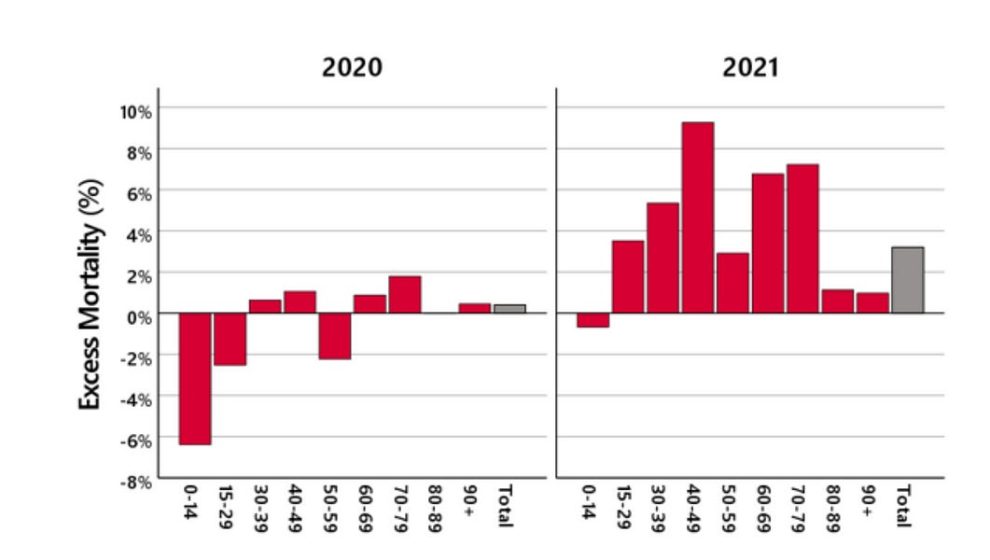Excess mortality in Germany 2020–2022 is a preprint by Christof Kuhbandner (a psychologist at Regensburg) and Matthias Reitzner (a statistician at Osnabrück) that applies sophisticated actuarial analysis to the publicly available all-cause mortality data provided by the German government. It turns out that when you account for historical mortality trends, the virus no longer looks so dangerous, and the vaccines no longer look so great.
From the abstract:
In 2020, the observed number of deaths was close to the expected number with respect to the empirical standard deviation. By contrast, in 2021, the observed number of deaths was two empirical standard deviations above the expected number. The high excess mortality in 2021 was almost entirely due to an increase in deaths in the age groups between 15 and 79 and started to accumulate only from April 2021 onwards. A similar mortality pattern was observed for stillbirths with an increase of about 11 percent in the second quarter of the year 2021.
Something must have happened in April 2021 that led to a sudden and sustained increase in mortality in the age groups below 80 years, although no such effects on mortality had been observed during the COVID-19 pandemic so far.
What happened in April 2021 was the beginning of mass vaccination across Germany.
Here’s an overview of mortality deficit or excess by age bracket:
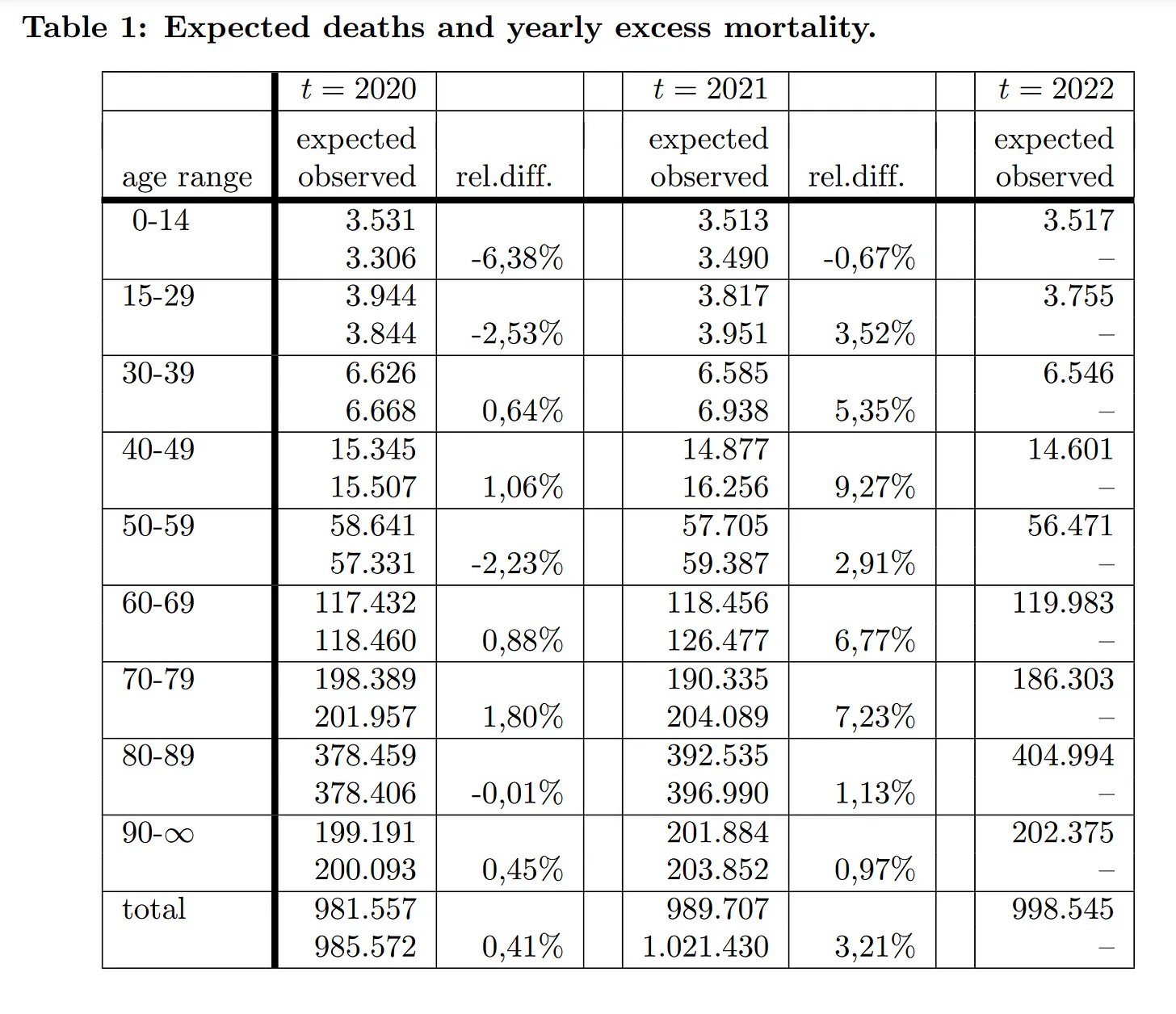
As I’ve said many times, the first year of the German pandemic was a total nothingburger. There was no heightened mortality trend save for among the oldest groups, briefly, in December. In 2021, however, the Year of Maximum Vaccination, the authors estimate almost 32,000 excess deaths. Mortality rose across the board, especially among youngs, with those in their 40s seeing 9% more deaths than expected by their model.
Here are the same figures visualised:
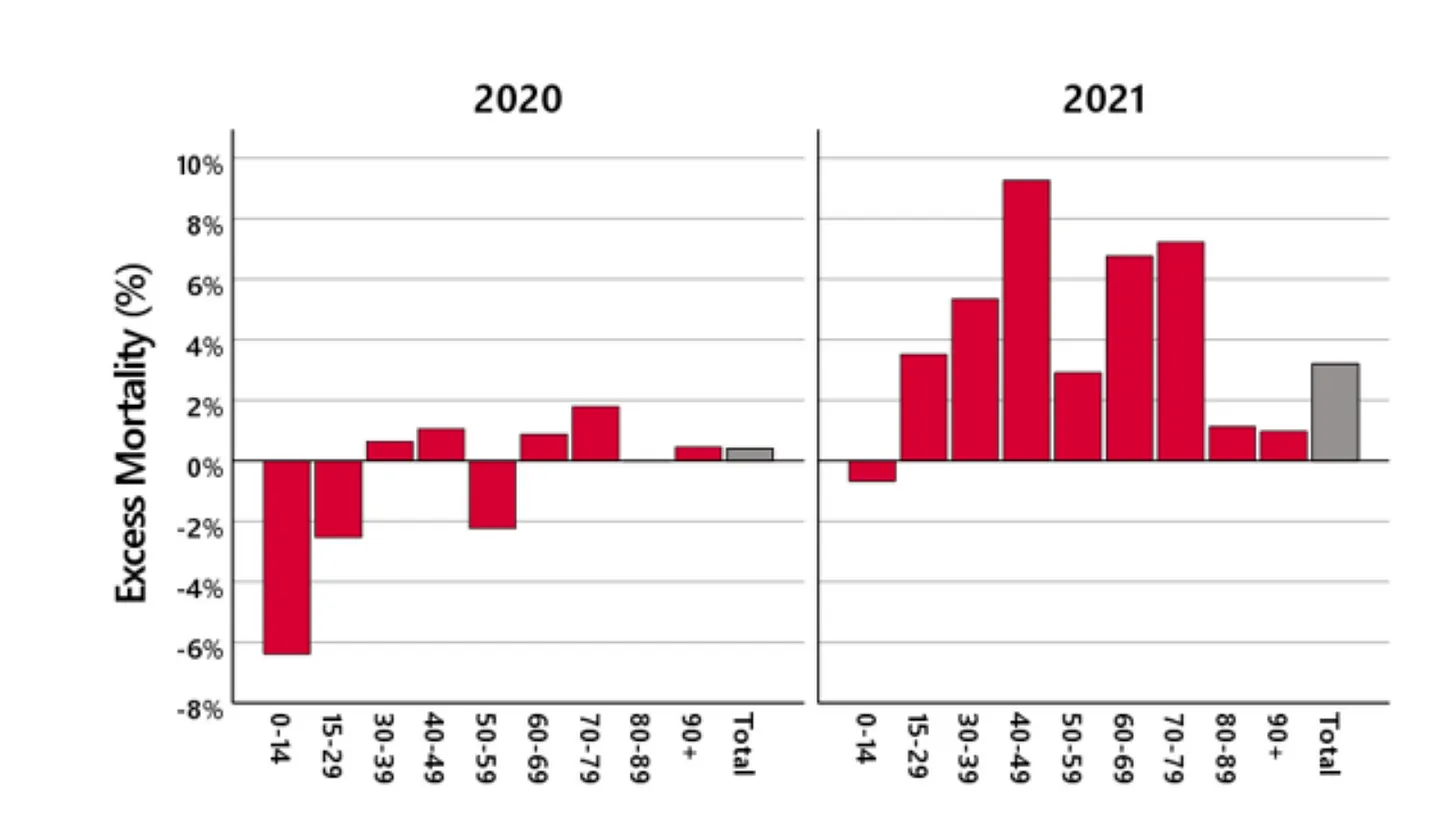
Just looking at that 2021 graph, you can tell there’s something really wrong here. If it’s virus doing all this killing, why is it hardest on people aged 15 to 79? How is it leaving the oldest Germans almost entirely unscathed?
The authors also provide a month-by-month breakdown for the 15-59 age-group:

They note that “The significant excess mortality in December 2020 continues slightly in January 2021, and then is mostly compensated until March 2021. That is, by the end of March, the cumulative excess mortality was close to zero.” These are what the funeral industry would call “pull-forward” deaths. In Germany, the virus mainly kills people who are about to die anyway, such that mortality spikes are followed by counterbalancing mortality deficits.
The authors continue:
In April and May 2021, a significant increase in excess mortality is observed, followed by a decrease up to August. However … the increase in excess mortality in April and May is not compensated for. In September there is again a significant excess mortality, which increases in November and is more than doubled in December 2021.
The April increase obviously coincides with the vaccine rollout, while the Fall increase aligns fairly well with the booster campaign. It’s noteworthy that dose 2 doesn’t seem as dangerous as dose 1 or 3; and that the mortality signal is very tightly correlated with the date of vaccination. As soon as you stop vaccinating, excess deaths recede.
As for people 60 and older, there are two distinct trends: Rising mortality coinciding, again, with the mass administration of doses 1 and 3 in the 60-79 bracket, and nothing special in the 80+ bracket:
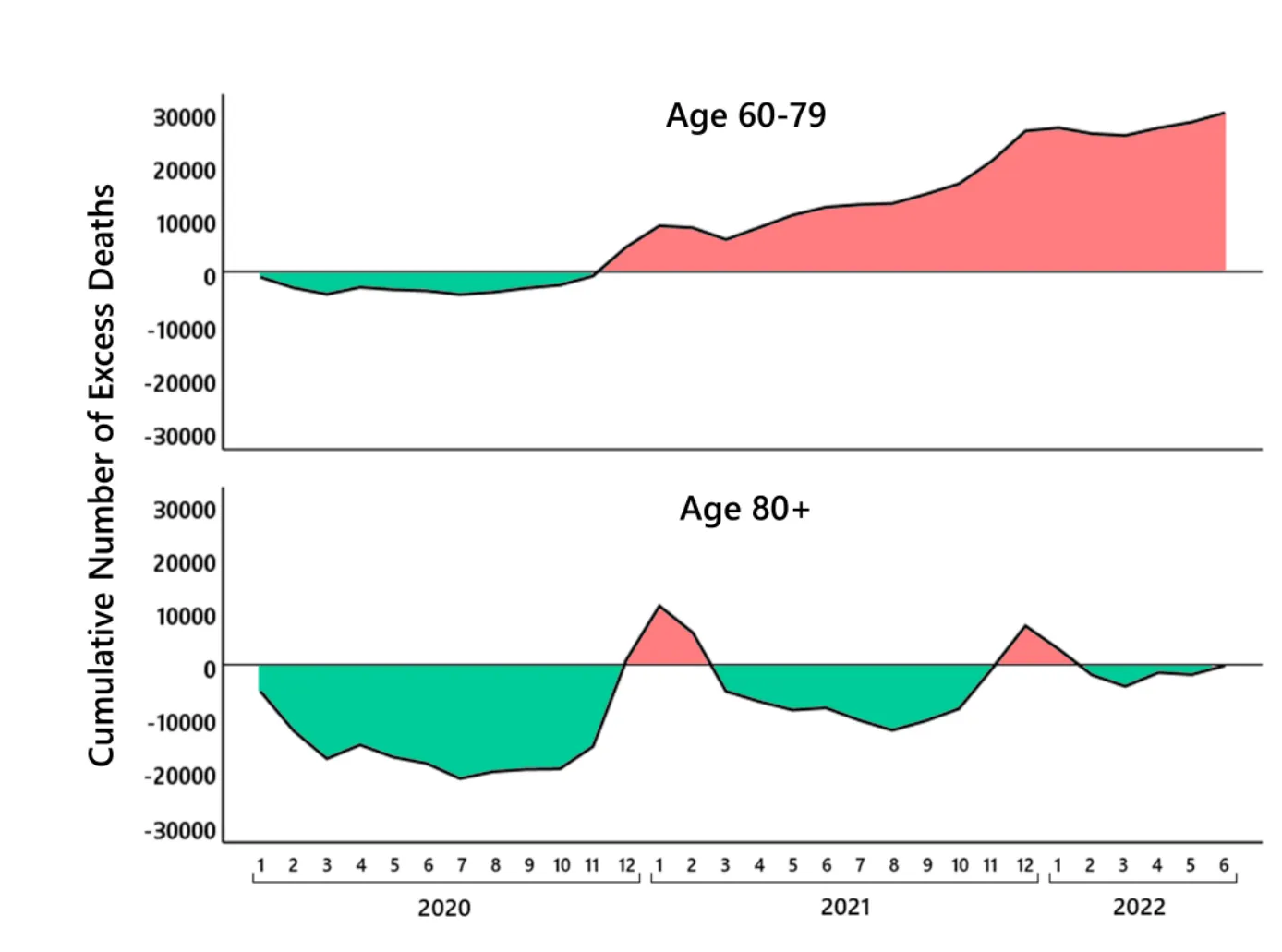
The vaccines obviously do most of their harm by inducing adverse immune reactions, and thus they’re relatively safe in the very elderly, who have weaker immune systems. This makes the oldest Germans a useful control, as they are the most sensitive to virus-associated mortality, and the least sensitive to vaccine-associated mortality. Thus, to anyone who objects that it’s really the April case spike that’s making the vaccines look bad here, or that it’s Delta causing those problems in the Fall, the reply is simple: The olds aren’t dying in April or September 2021, just the youngs. What kills mainly the youngs and spares mainly the olds? The answer is not SARS-2.
As the authors note:
The maybe most surprising fact is that [2021] produces in all age groups a significant mortality increase, which is in sharp contrast to the expectation that the vaccination should decrease the number of COVID-19 deaths. The only exception is the last age group [80+] … However, when interpreting this finding, it has to be taken into account that there wa sa huge mortality deficit in 2019 and until October 2020 which was compensated in November [and] December 2020 and January 2021.
It becomes very hard to doubt that the excess mortality of 2021 is vaccine related, when you compare the relative chronology of deaths and mass vaccination:
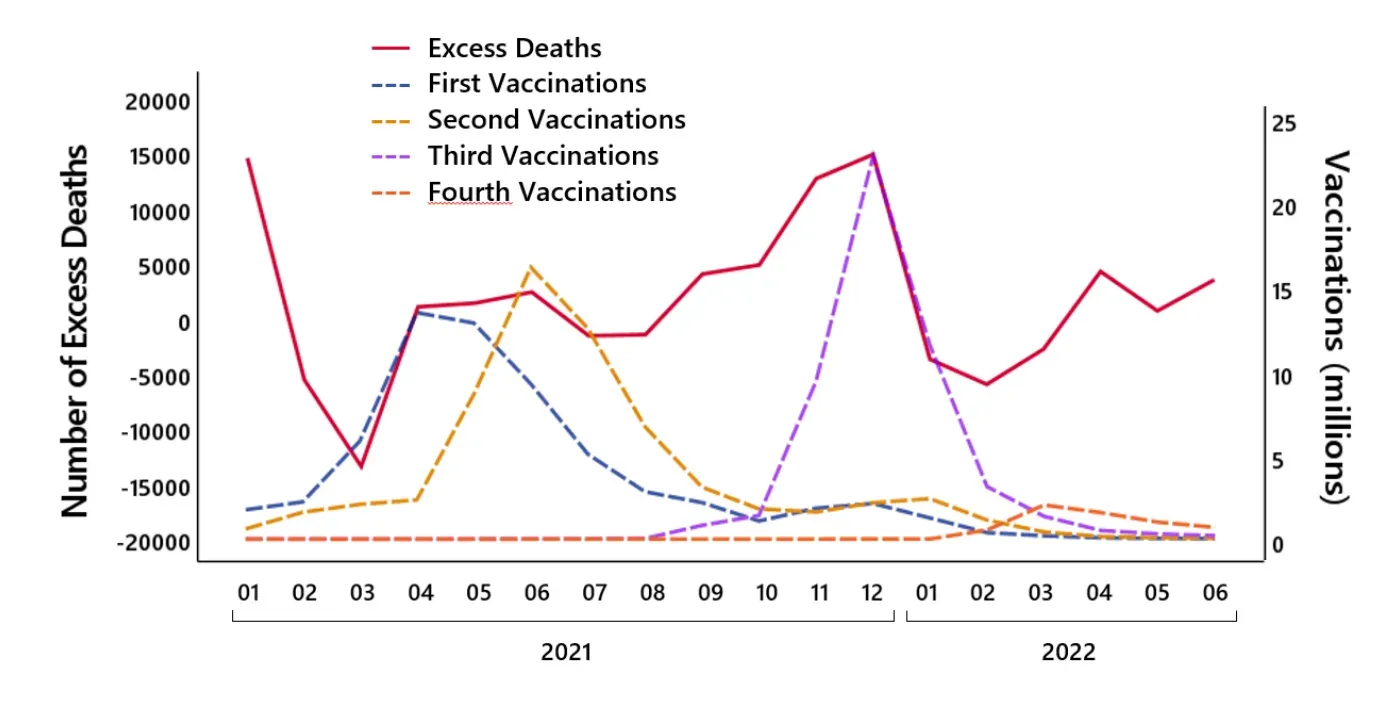
There are also more specific mortality correlations by age bracket. Thus the authors note the “further hint” that the vaccines are implicated in these deaths, “is the fact that the age group 0–29 has a peak in the excess mortality in June 2021 instead of April 2021,” precisely when these younger cohorts were lining up for their first dose.
A final intriguing finding relates to the relationship between official Corona death numbers and excess mortality. Nobody will be surprised to learn that the SARS-2 death toll is egregiously inflated, but the age-cohort patterns are worth a look:
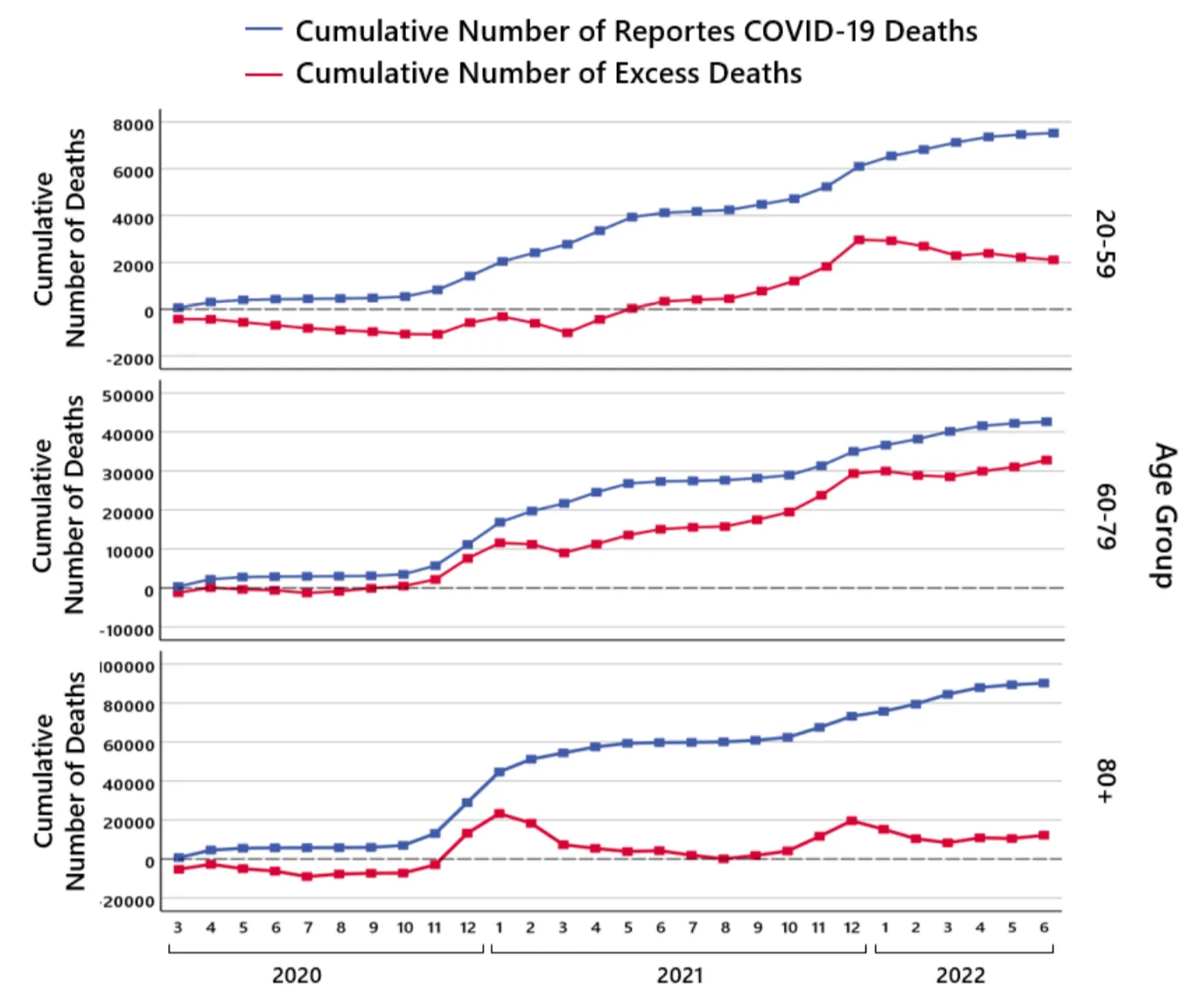
The official figures are most accurate for those in their 60s and 70s. For those over 80 years old, they are almost entirely meaningless. This group saw less than 20,000 excess deaths in two-and-a-half years of Corona, while their official death count is approaching 100,000.
It’s no wonder that nothing—not lockdowns, not vaccines, not masks, not all the tests in the world—can drive down all-cause mortality in Germany. Most of the people the virus kills are on the verge of dying anyway, and if you spare them a death from SARS-2, they’ll just die of something else next month.
Story cited here.







